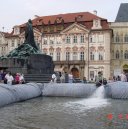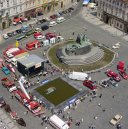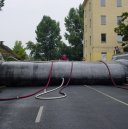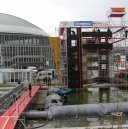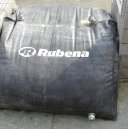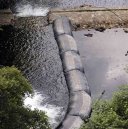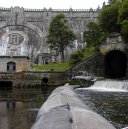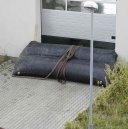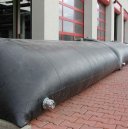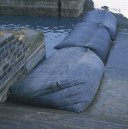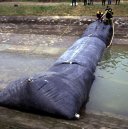Waterwalls WW
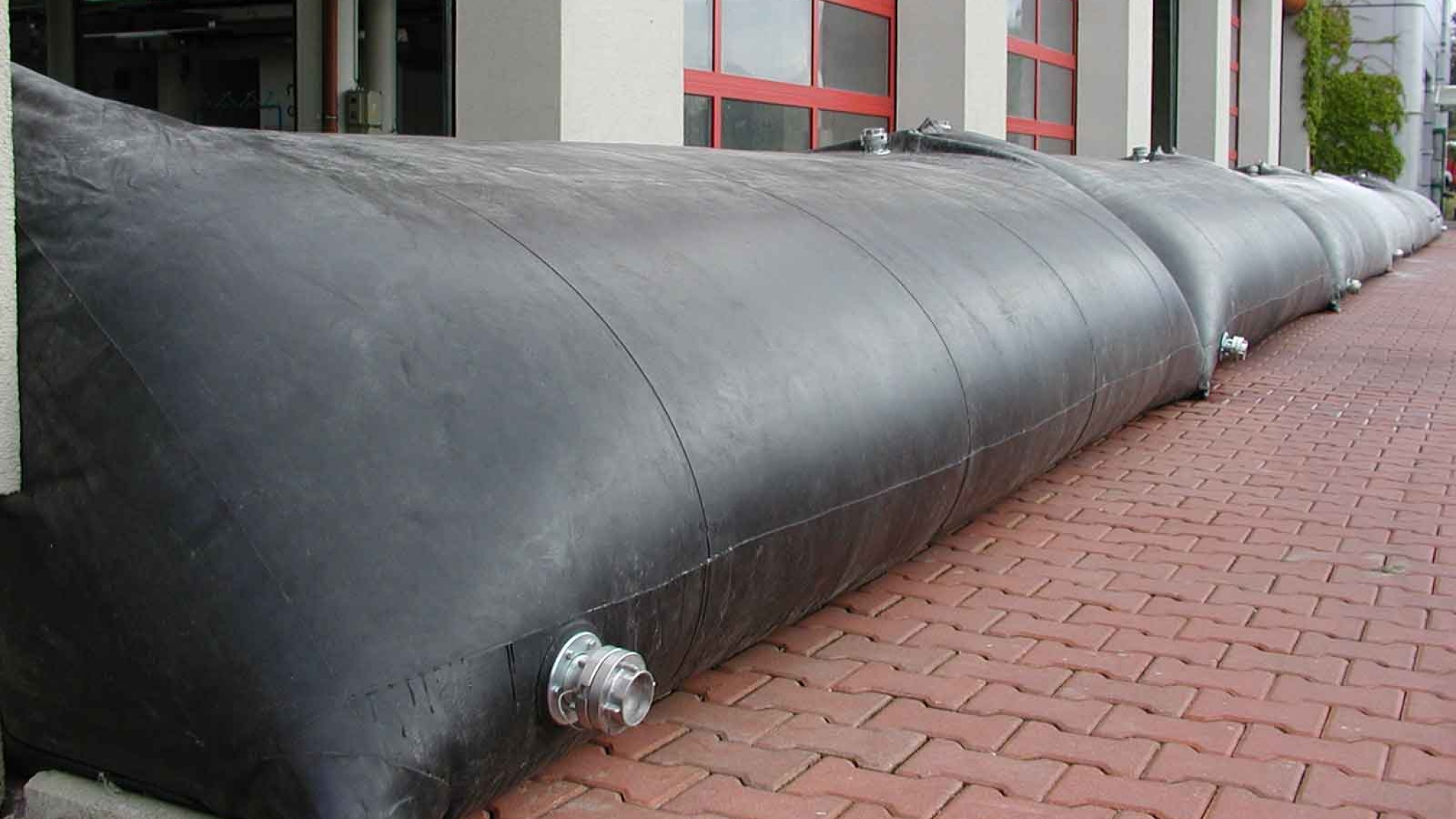
Waterwals WW
Waterwalls are bags of special shape manufactured from rubber-textile material, provided with flanges used for filling with water, bleeding and discharge. The textile inlay is made of high-durability PES fabric with double-sided rubber coat. The used rubber on the EPDM basis is long-term resistant against weather, ozone, UV radiation and it is characterized in its good tear-proofness (…it is characterized by good abrasion resistance). In particular the bag casing well resists even chemical solutions – see Instructions for Use.
Advantages of Rubena Waterwall System
High productivity
A classic system of protection using sandbags is incomparable with the waterwall system. Constructing 100 metres of protective wall of sandbags requires approx. 700 hours of work of a single man. Further to this 280 tons of sand, 7000 pieces of bags; 56 five-ton lorries must be used to transport the materials.Using Rubena waterwall, only 14 hours at the most are required to build the same dam. You need only 20 Rubena waterwalls model A5, transported by a single pick-up.
Let´s compare: 700 hours/14 hours. In case of the statutory disposal of contaminated sand after floods, even the first application of these waterwalls is more advantageous both in financial and environmental terms! 30 ths Euro/20 ths Euro.
Environmental Protection
A very considerate way of flood protection – there is no need to use any special measures before or after use of Rubena waterwalls. The walls do not require any constructional preparedness before use. There will be no problem of where to dispose the contaminated sand after floods nor the problem of unecological logistics before and after the action.Other methods may require manipulation with heavy technology in the area of action. That may result in depreciation of terrain and negative impacts in the area of use.
Simple Logistics
The system does not require complicated manipulation – only 2 men are sufficient to install Rubena waterwall. The walls are easy to store and transport, they have a long lifetime and they can be used many times.Rubena waterwalls can be filled with river water using standard pumps, possibly with water from fire cisterns or hydrants. They are provided with standard fire hose connections. Time necessary for filling one segment depends on a type of used pump. Filling does not usually exceed 15 minutes.
Basic Technical Data
Rubena waterwalls are manufactured in two basic versions. Model A and C is designed especially to raise banks of watercourses, to wall off streets etc. They can be used successfully to temporarily dam watercourse or during sumping. Model B is prepared to protect entrances, doors and low-lying windows of buildings.Three basic types of waterwalls are produced – A, B, and C. A and C types are self-supporting, B type is primarily intended to protect buildings using them as a necessary support.
Standard Part of Rubena waterwall
|
Parameters (informative) |
Model |
Model |
Model |
Model |
|
| Lenght | (m) |
5 |
5 |
5 |
5 |
| Width | (m) |
2,2 |
1,7 |
2,2 |
3,3 |
| Protective height | (m) |
0,8 |
0,8 |
1,2 |
1,4 |
| Volume | (l) |
6 600 |
6 600 |
9 000 |
16 000 |
| Weight (empty part) | (kg) |
70 |
75 |
115 |
210 |
In the basic line of manufactured parts, we can also deliver parts 1, 2, 3 and 4 metres long, possibly we are able to produce a specific bag for a specific location in accordance with customer’s demands.
Diagrams of the possible use of the WW flood wals
Types A and C are independent, type B has been designed for protecting buildings, which it uses as a necessary support.
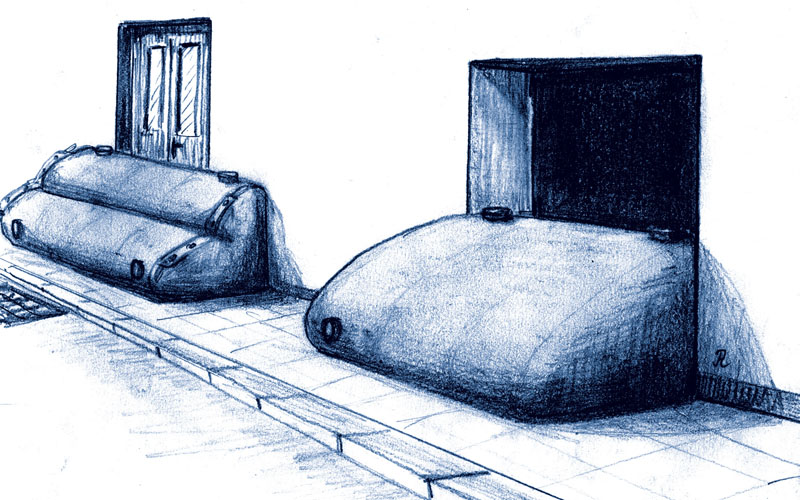 |
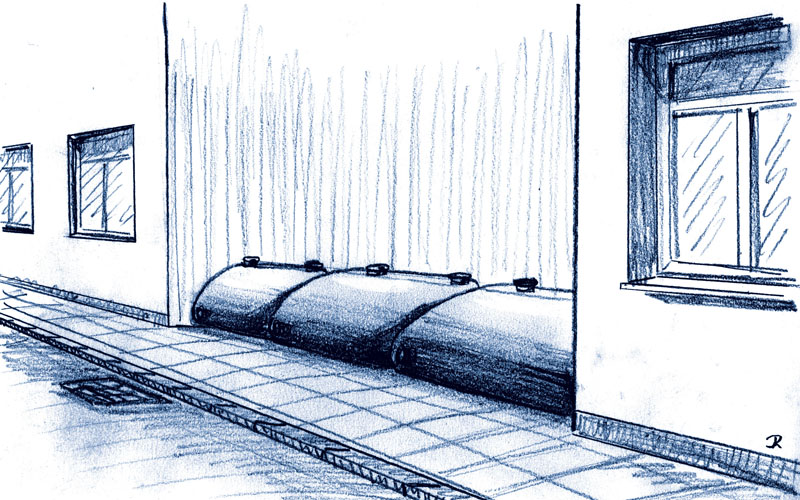 |
|
Protection of entrances, doors, etc. Type B / typ A and C
|
Blocking and diverting flood water when it spills into streets. Type A and C |
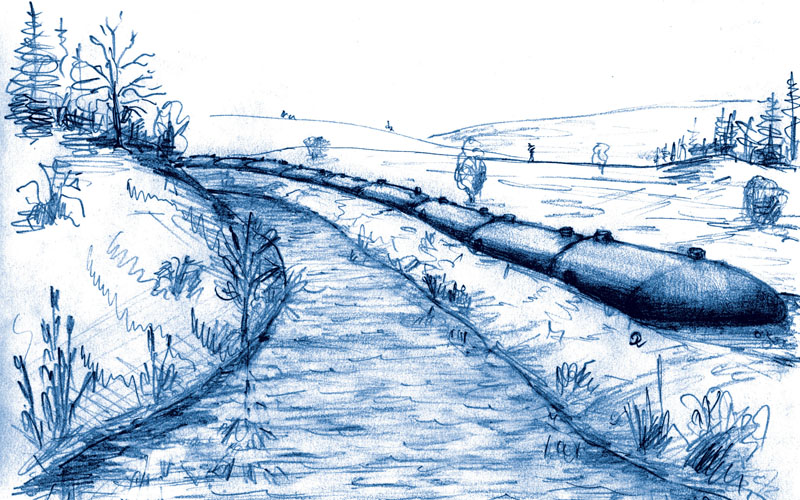 |
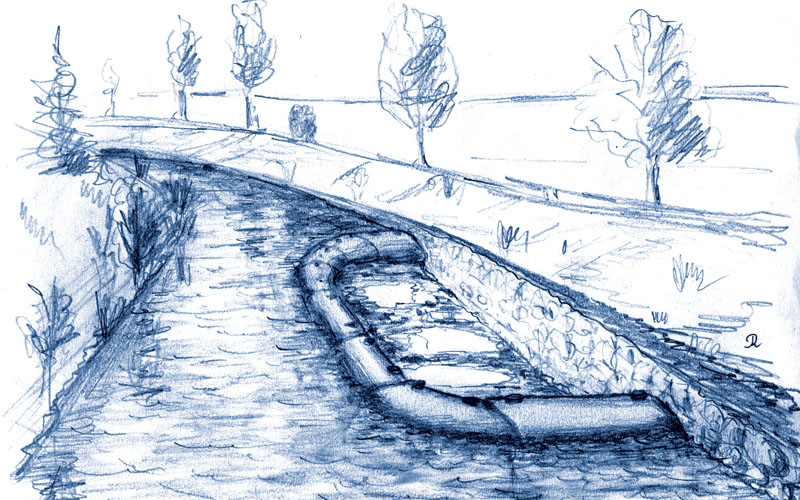 |
|
Raising river banks. Type A and C |
Water flow regulation in riverbeds. Type A and C
|
Bags multifunctionality
- Mobile flood-control wall, emergency bag for entrapping chemical solutions, reservoir for service water, elements for the construction of pools and decontaminating stations.
- Elements for footbridges in flood situations, segments for the diversion of watercourses during construction and other activities.
- Segments for creating temporary weirs on watercourses.
Note: As mentioned above, Rubena waterwall is also suitable to collect water polluted with dangerous materials. Neutralization can be carried out directly inside the bag, which requires knowledge of respective chemical reactions Resistance of emergency bags against chemical agents can be adapted to customer’s needs using special materials of rubber parts of bags and various materials of metal fittings. Ask manufacturer for detailed specification.
